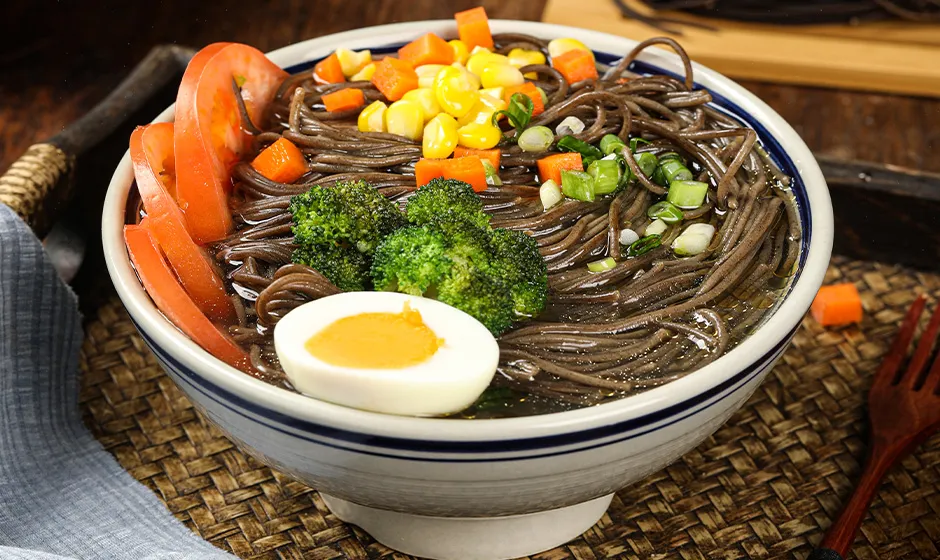Comparing Soba and Udon Noodles Their Key Differences and Unique Characteristics
The Difference Between Soba and Udon Noodles
When it comes to Japanese cuisine, few elements are as iconic as noodles. Among the plethora of noodle varieties, two stand out soba and udon. While both are beloved components of traditional dishes, they are quite different in terms of ingredients, texture, flavor, and uses. Understanding these differences can enhance your culinary experience and help you choose the right noodle for your next culinary adventure.
Ingredients and Composition
The primary difference between soba and udon noodles lies in their ingredients. Soba noodles are made from buckwheat flour, which gives them a unique flavor and a slightly grayish-brown color. Buckwheat, despite its name, is not a type of wheat; it is a seed that belongs to the knotweed family. This makes soba a gluten-free option, ideal for those with gluten intolerances, although many soba noodles may contain some wheat flour to improve elasticity and texture.
Conversely, udon noodles are made from wheat flour, which gives them a much thicker, chewier texture. Udon is typically white and has a smooth surface. The high gluten content in wheat allows for a bouncier and more substantial noodle, making udon a hearty option in various dishes. The choice of flour is essential to understanding these distinct noodles, as it influences not only their taste but also their culinary applications.
Texture and Flavor
When you first cook and taste soba, you will notice that the texture is firm yet tender, with a slight nutty flavor stemming from the buckwheat. The earthy taste of soba complements a variety of sauces and toppings, offering a more delicate flavor profile. Soba noodles can be served cold with a dipping sauce (known as zaru soba) or in a hot broth, often paired with seasonal toppings, and they integrate seamlessly into lighter dishes that emphasize the ingredients.
In contrast, udon noodles present a thick, chewy texture that is satisfying to bite into. Their flavor is mild, allowing the accompanying broth or sauce to shine. Udon is often used in heartier dishes, such as udon soup or stir-fried udon, where the noodles can absorb the flavors of rich, savory broths or robust sauces, providing a filling meal option. The texture of udon invites a comforting experience that is especially popular during colder months.
difference between soba and udon noodles

Culinary Uses and Dishes
Both soba and udon noodles are versatile and can be used in various dishes, but they typically find their places in distinct contexts. Soba is famously enjoyed as a standalone dish or a side, often served cold in the summer months. For example, soba salad featuring fresh vegetables and sesame dressing is a refreshing option when temperatures rise. Additionally, soba can be found in warm dishes, such as soba noodle soup, where the focus is on the broth and seasonal ingredients.
Udon, on the other hand, is often featured in comfort food recipes. It is a key ingredient in udon soup, a beloved dish that combines brothy goodness with various toppings like green onions, tempura, or sliced meats. Stir-fried udon is also popular, providing a heartier meal packed with vegetables and proteins tossed in a savory sauce. The starchiness of udon pairs perfectly with bold flavors, making it a staple in comfort food offerings.
Nutritional Aspects
From a nutritional standpoint, soba offers a higher protein content and a good amount of fiber, especially when made from 100% buckwheat flour. It is rich in antioxidants and has health benefits associated with improved heart health and blood sugar regulation. Conversely, udon noodles, while still nutritious, are more carbohydrate-dense due to their wheat flour base. They may not have the same fiber content as soba but can be a good source of energy, especially when combined with vegetables and proteins in a dish.
Conclusion
In summary, while soba and udon noodles both play essential roles in Japanese cuisine, they differ significantly in ingredients, texture, flavor, and culinary uses. Soba noodles offer a nutty flavor and are best suited for lighter dishes, while udon provides a chewy, hearty foundation that thrives in robust soups and stir-fries. Understanding these differences can enrich your dining experience and inspire you to explore the delightful world of Japanese noodles more fully. Whether you prefer the delicate nuances of soba or the satisfying chew of udon, both noodles offer a unique and delicious culinary experience.
-
Unleash Your Inner Chef with Delectable Italian Pasta CreationsNewsAug.01,2025
-
Savor Health and Flavor: Irresistible Soba Noodles for Sale Await!NewsAug.01,2025
-
Nourish Your Body with Premium Organic Ramen - A Culinary Delight AwaitsNewsAug.01,2025
-
Elevate Your Dishes with Our Exquisite Kinds of Egg NoodlesNewsAug.01,2025
-
Dive into Flavorful Convenience with Our Ramen OfferingsNewsAug.01,2025
-
Discover Exquisite Types of Naengmyeon and Chilled Soba NoodlesNewsAug.01,2025
-
Is Whole Wheat Pasta Healthy?NewsMay.30,2025
Browse qua the following product new the we

















































































































